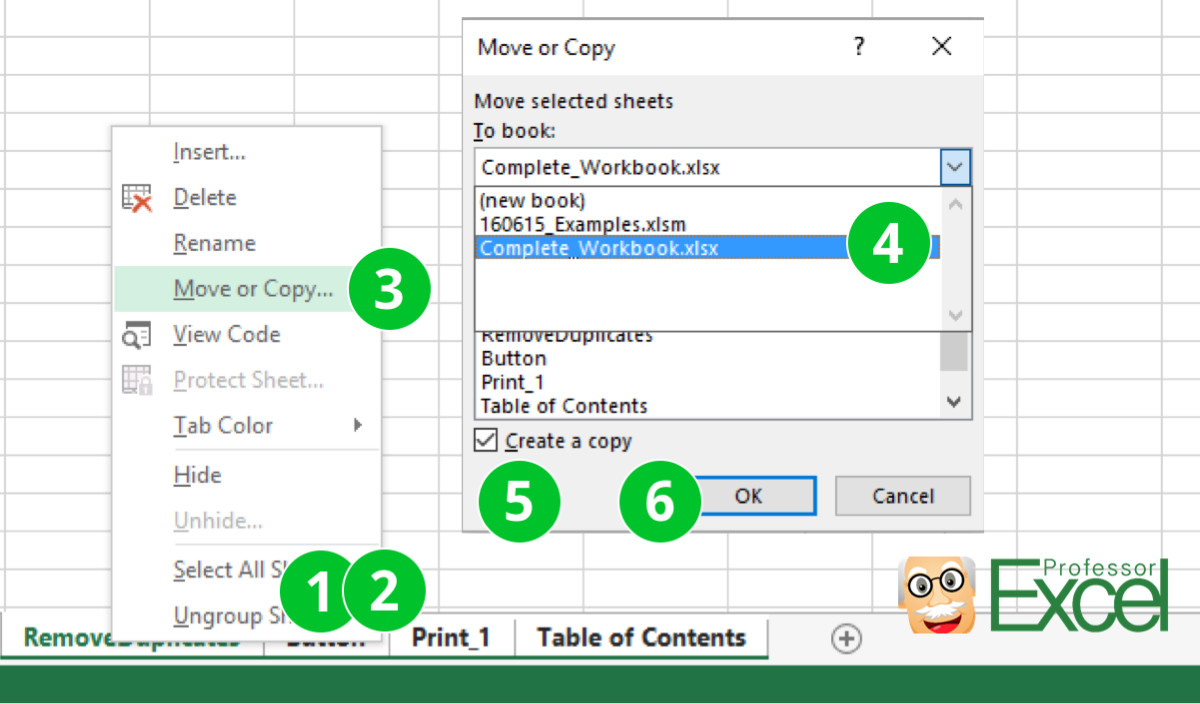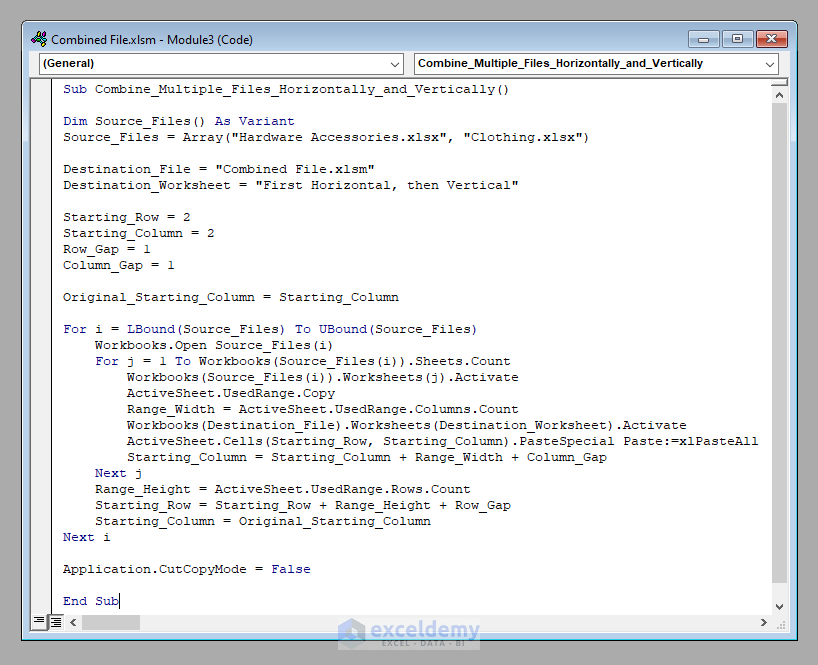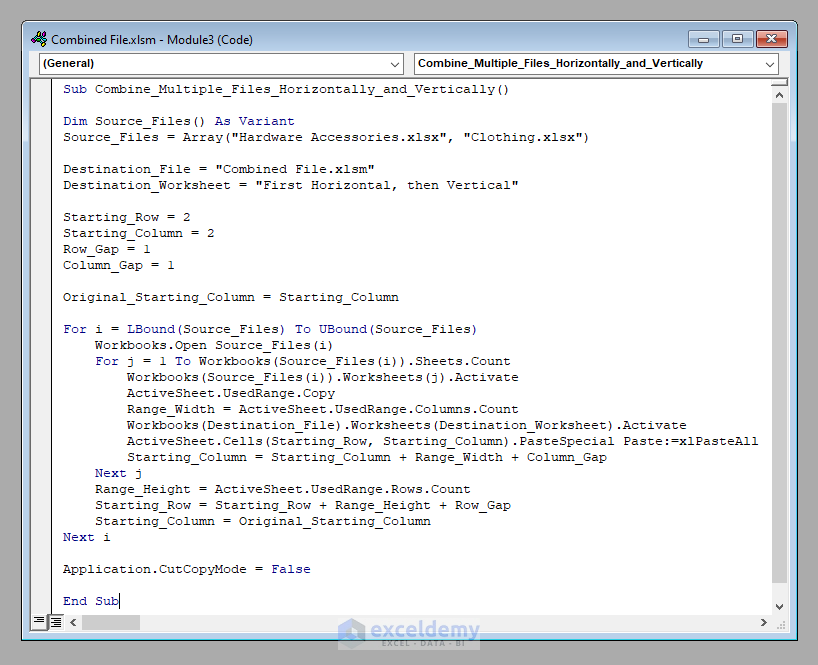Combine Excel Sheets into One: Easy Tips and Tricks

Introduction to Merging Excel Sheets

Merging multiple Excel sheets into a single spreadsheet can significantly streamline data management, especially when dealing with large datasets from various sources. Whether you are consolidating reports, analyzing sales data from different regions, or compiling inventory lists, knowing how to combine Excel sheets efficiently can save time and prevent errors. This comprehensive guide will walk you through several methods to achieve this, catering to different levels of Excel proficiency.
Why Merge Excel Sheets?

Before diving into the “how,” let’s explore the “why”:
- Data Consolidation: Merging allows for a unified view of related data from various sheets.
- Efficiency: Reduces redundancy in data entry and errors from manual copy-pasting.
- Improved Analysis: Facilitates more detailed and comprehensive data analysis when everything is in one place.
Manual Method for Merging Sheets

Here’s a step-by-step guide for those preferring a hands-on approach:
Open all Excel files: Have all the files you need to combine open.
Create a new workbook or open the workbook where you wish to merge the sheets.
Copy Data:
- Select the data in the first sheet, then press Ctrl+C to copy.
- In your destination workbook, select where you want to paste this data and press Ctrl+V.
Repeat: Continue this process for all sheets, arranging the data as required, maybe using extra rows or columns for clarity.
Format and Organize: Once all data is copied, spend some time formatting headers, ensuring consistency, and organizing the layout.
✅ Note: This manual method is suitable for small datasets. For large datasets, consider using automated methods discussed later.
Using Excel Power Query for Data Merging

Power Query, an integral part of modern Excel versions, offers a more sophisticated approach to merging data:
Access Power Query:
- Go to the ‘Data’ tab and click ‘Get Data’ > ‘From Other Sources’ > ‘From Microsoft Query’.
- Or from the ‘Get & Transform Data’ group, choose ‘Get Data’ > ‘From Workbook’.
Select Source Files:
- Navigate to and select each Excel file you want to merge.
- Click ‘Open’ for each file.
Load Data into Queries:
- After selecting the files, they will appear in the Power Query Editor as separate queries.
Merge Queries:
- In the Power Query Editor, select one query from the list on the left.
- Click ‘Merge Queries’ from the Home tab. Choose the second query and specify how you want to combine them (append, merge, etc.).
Transform and Load:
- Use the available tools to transform your data as needed (e.g., splitting columns, changing data types).
- Once satisfied, click ‘Close & Load’ to bring the merged data into your workbook.
| Manual Method | Power Query Method |
|---|---|
| Good for small datasets | Ideal for larger datasets |
| Time-consuming with multiple sheets | Quick and efficient merging |
| Requires manual effort for formatting | Offers data transformation capabilities |

🚀 Note: Power Query can handle complex data merges, providing more control over the data's final shape.
Automating with Macros

For those who frequently need to merge sheets and have some familiarity with VBA:
Open the Visual Basic for Applications (VBA):
- Press Alt+F11 or navigate via ‘Developer’ tab > ‘Visual Basic’.
Write the Macro:
Sub MergeSheets()
Dim SourceWB As Workbook
Dim TargetWB As Workbook
Dim SourceWS As Worksheet
Dim TargetWS As Worksheet
Dim FolderPath As String
Dim FileName As String
Dim SheetName As String
Dim FirstAddress As String
Dim rng As Range
FolderPath = "C:\YourFolderPath\" ' Replace with your folder path
FileName = Dir(FolderPath & "*.xlsx")
Set TargetWB = ThisWorkbook
Set TargetWS = TargetWB.Sheets(1)
Do While FileName <> ""
Set SourceWB = Workbooks.Open(FolderPath & FileName)
For Each SourceWS In SourceWB.Worksheets
With TargetWS
Set rng = .Cells(.Rows.Count, 1).End(xlUp).Offset(1, 0)
FirstAddress = rng.Address
SourceWS.UsedRange.Copy rng
Set rng = .Range(FirstAddress).Resize(SourceWS.UsedRange.Rows.Count, _
SourceWS.UsedRange.Columns.Count)
rng.TextToColumns Destination:=rng, DataType:=xlDelimited, _
TextQualifier:=xlDoubleQuote, ConsecutiveDelimiter:=False, _
Tab:=True, Semicolon:=False, Comma:=False, Space:=False, _
Other:=False, FieldInfo:=Array(1, 1), TrailingMinusNumbers:=True
End With
Next SourceWS
SourceWB.Close False
FileName = Dir
Loop
End Sub
- Customize and Run:
- Adjust the ‘FolderPath’ variable to point to the directory with your Excel files.
- Press F5 to run the macro.
⚠️ Note: Always save your work before running macros. Macros can make irreversible changes to your data.
Using Excel's Consolidate Feature

Excel’s Consolidate feature simplifies combining data from different sheets:
Prepare Your Sheets:
- Ensure each sheet has the same structure for data consolidation.
Select a Target Cell:
- Go to the sheet where you want to consolidate the data, select where you wish the data to start.
Launch Consolidate:
- Go to ‘Data’ tab > ‘Consolidate’.
Set up Consolidation:
- Choose ‘Function’ as sum, average, etc.
- Click ‘Add’ to include ranges from other sheets.
Finalize:
- Check ‘Create links to source data’ if you want dynamic updates.
- Click ‘OK’ to combine the data.
Wrapping Up: Consolidating Your Data Workflow

Merging Excel sheets is a skill that can significantly enhance your productivity and data analysis capabilities. Whether you opt for manual methods, leverage Excel’s Power Query for complex data merging, or automate with macros, the approach you choose depends on your dataset size, the frequency of the task, and your comfort with Excel’s features. Each method has its merits, offering solutions from simple, manual merging to dynamic, automatically updated data consolidation.
Remember:
- For small datasets, manual copy-pasting might suffice.
- For larger or frequently updated datasets, Power Query or Consolidate features are ideal.
- If you’re dealing with repetitive tasks, automating with macros saves time in the long run.
The choice of method also depends on the need for data integrity, ease of maintenance, and the level of sophistication in data manipulation required.
Can I merge sheets from different Excel files?

+
Yes, you can use Power Query, macros, or the Consolidate feature to combine sheets from multiple Excel workbooks.
What if my sheets have different structures?

+
For sheets with varying structures, Power Query’s transformation tools can help standardize data before merging. Alternatively, you can manually adjust data layouts.
Is it possible to automate merging with Excel?

+
Absolutely, using VBA macros allows you to automate the merging process, which is ideal for repetitive tasks.
Can merging sheets lose data?

+
If done correctly, merging should not lose data. However, with manual methods, human error can lead to data loss. Automation and Power Query reduce this risk significantly.



